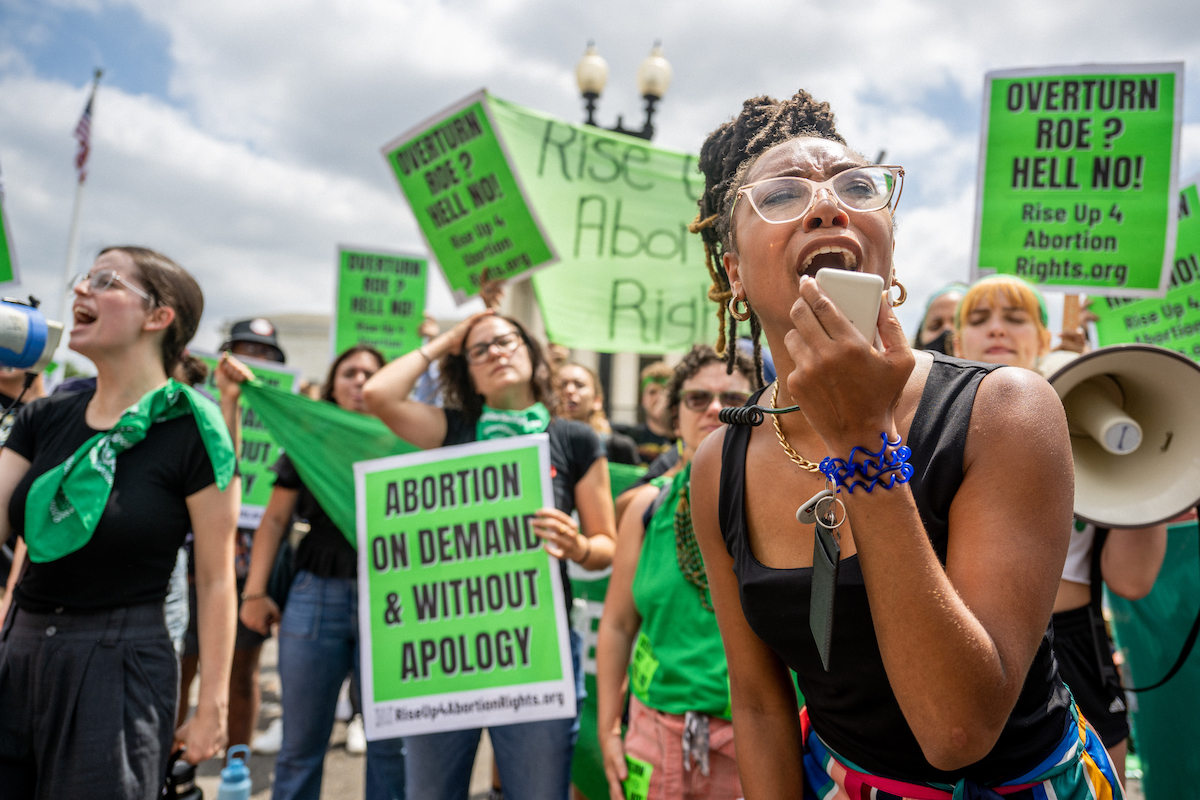Those Green Scarves, Explained: How Green Became the Color of Abortion Rights

If you’ve been participating in or paying attention to the recent wave of abortion rights protests, you might have noticed that many have been a sea of green signs, clothes, and bandanas.
It’s very common for causes to have a color associated with them. Women’s rights movements have often used white as a nod to the suffragist movement. Pink has also been prevalent as the color of much Planned Parenthood signage and shirts, not to mention the controversially cringey “pink pussy hats” of 2016.
But the current abortion rights movement is awash in green. The choice isn’t actually a new one, though. Rather, it’s adopted from Argentina’s decades-long fight for abortion rights.
Argentina’s “green wave”
According to the French outlet Le Monde, the green scarf was first introduced as a symbol of reproductive freedoms in Argentina in 2003.
The outlet writes:
It was a reference to the white scarves used by the Mothers of the Plaza de Mayo, the Argentinian women fighting since 1977 to find their children who were “disappeared” under the military dictatorship (1976-1983). And green “is a symbol of hope, health, life,” [founder of the Argentinian branch of Catholics for the Right to Decide Marta] Alanis explained. And a gesture of defiance at the anti-abortion movement which claims to be “pro-life.” The scarf was a simple piece of cloth cut into a triangle, with the words “right to decide” in yellow.
The “green wave” saw a revival in Argentina in 2018, as documented by the international feminist organization Fòs Feminista. Enormous crowds, decked in pañuelos verdes—green handkerchiefs—protested in the streets demanding Congress legalize abortion. The Senate rejected the bill legalizing abortion up until 14 weeks of pregnancy that year but in 2020, activists were successful in getting that legislation passed. In the years in between, green handkerchiefs were adopted as a symbol of the fight for reproductive freedoms in countries across Latin America, the Caribbean, and East Africa.
Green as a symbol of reproductive rights at U.S. protests
After the Supreme Court draft of Dobbs v. Jackson Women’s Health Organization was leaked in May of 2022, there were mass protests nationwide. Green popped up here and there but it appears not to have fully taken grasp at U.S. protests until after the official SCOTUS decision was handed down on June 24.
From there, the green wave had clearly washed over the abortion rights protest scene.
Embed from Getty Images Embed from Getty Images Embed from Getty Images Embed from Getty ImagesThe green wave has only grown in the protests since then, including at the protest in Washington D.C. in July that saw 17 members of Congress arrested. You could see the presence of green, and specifically of those pañuelos verdes that day.
Embed from Getty Images Embed from Getty Images Embed from Getty Images“It’s a great honor, personally and collectively, that green is now being taken up in the United States,” Marta Alanis told Le Monde. “Previously, the United States came to Latin America to bring us dictatorships, military bases and poverty. Today, the Latin American green tide is coming to the United States to contribute to the liberation of women.”
That’s a hell of a well-earned burn and also an appreciated show of solidarity in our time of need.
(image: Brandon Bell/Getty Images)
Have a tip we should know? [email protected]
